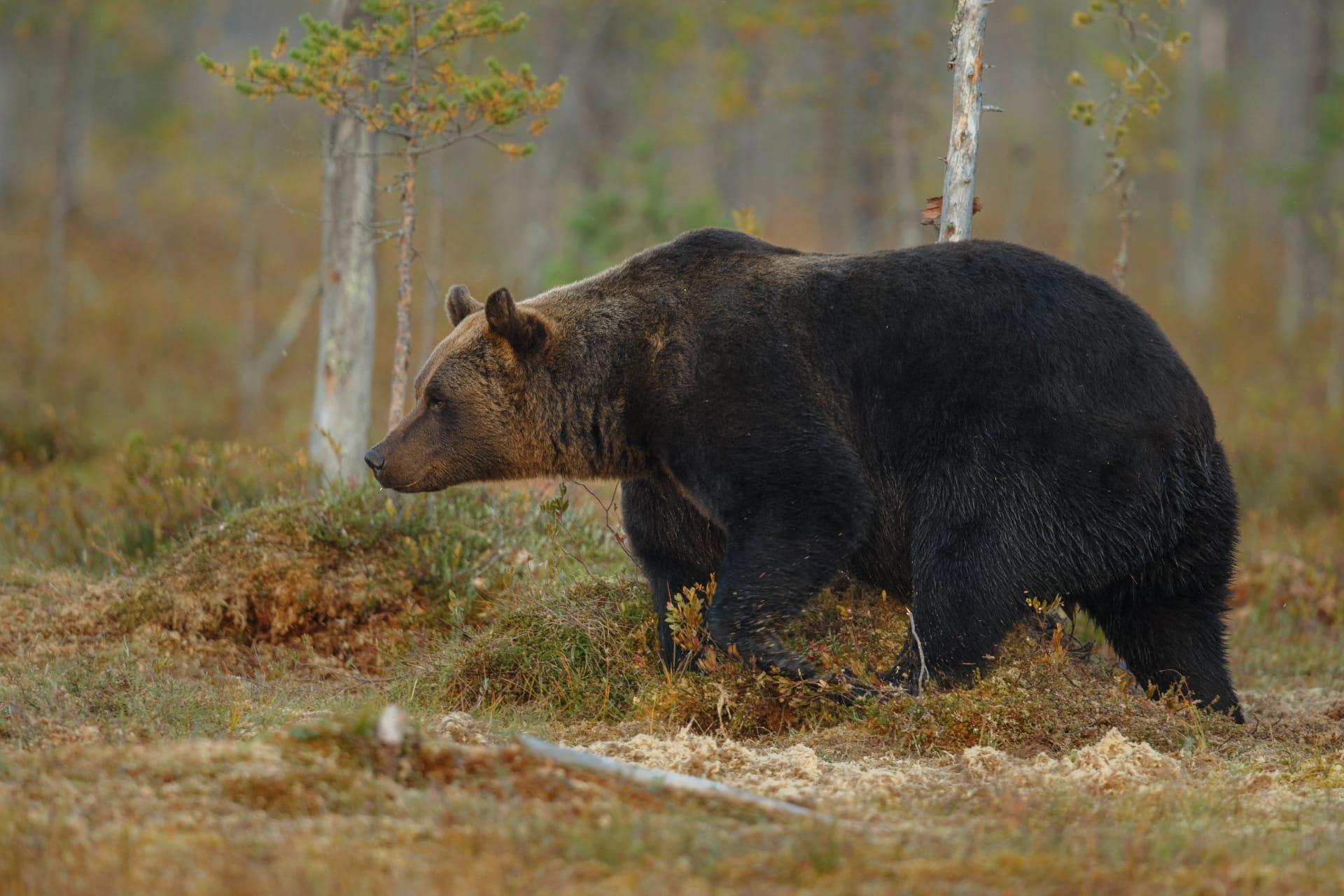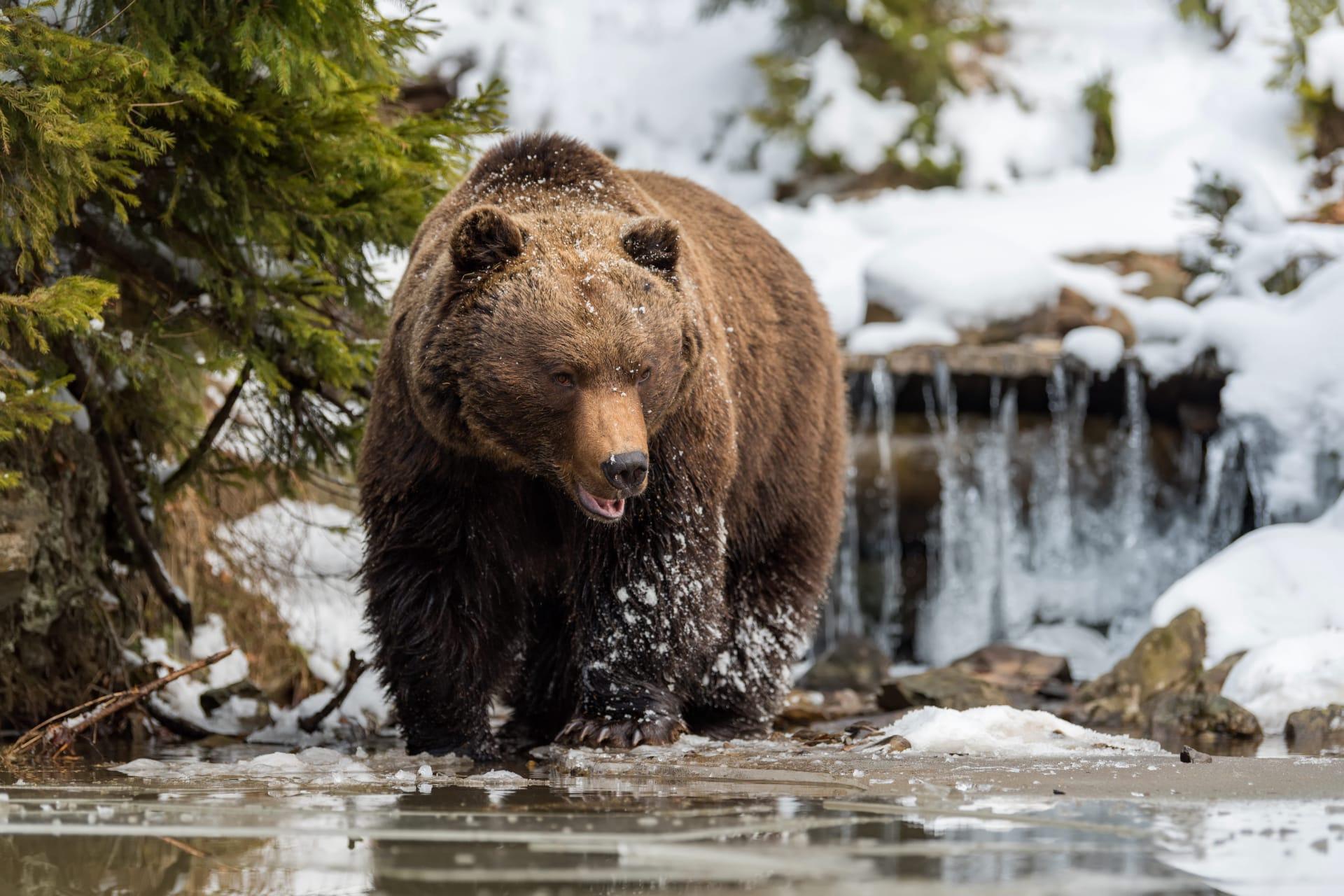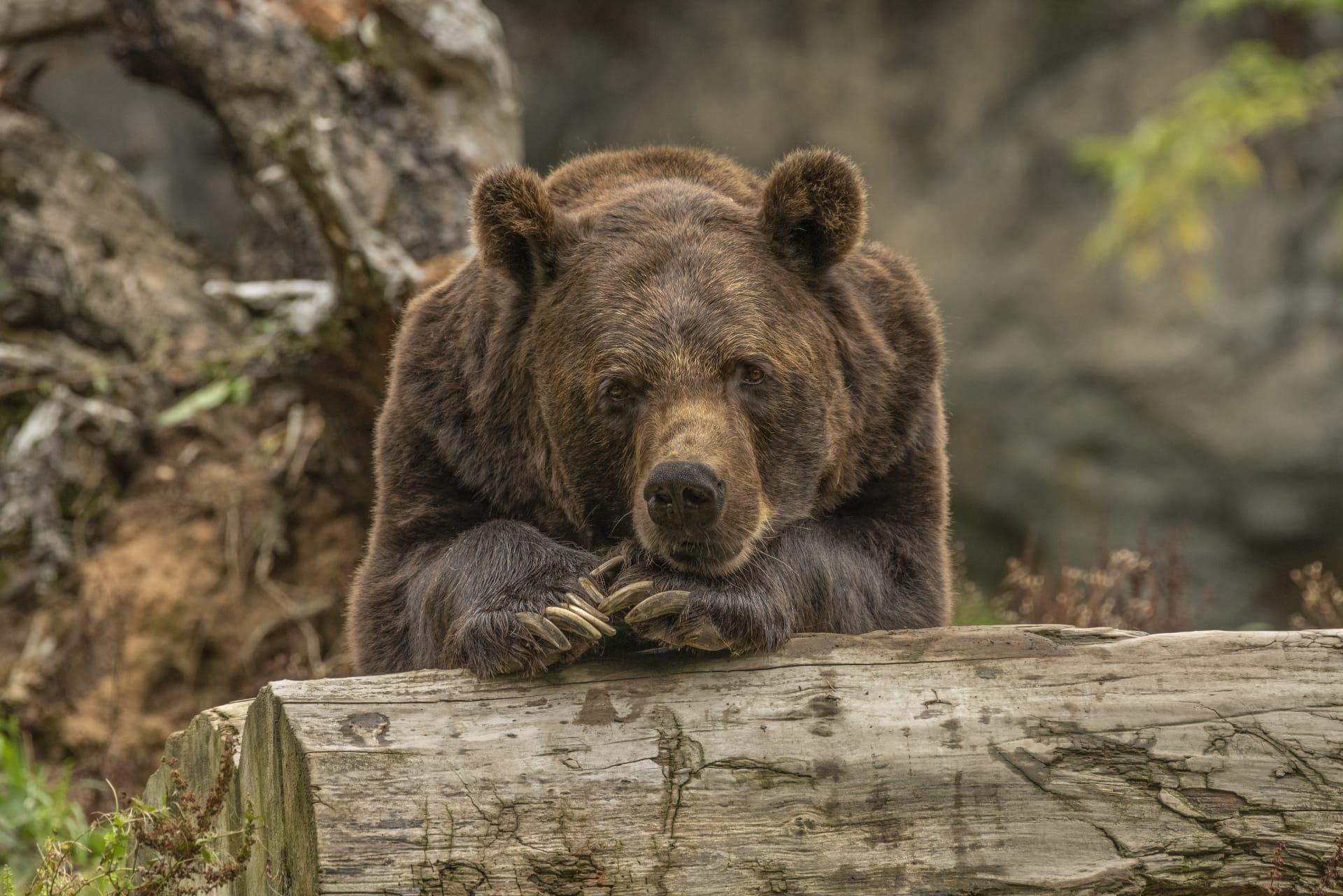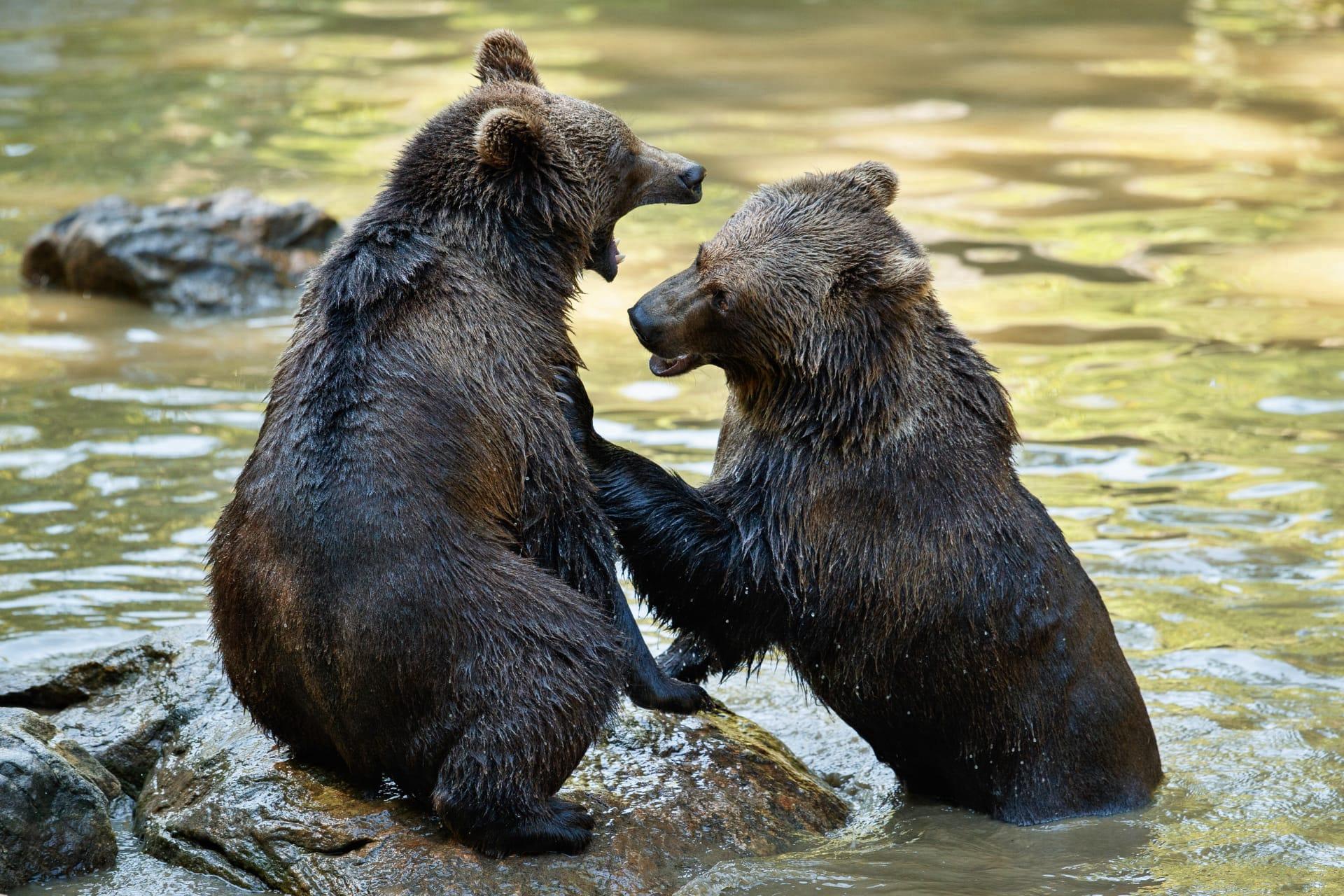Brown Bear Characteristics
- Home /
- Mini Encyclopedia /
- Animal /
- Brown Bear Characteristics
1
Brown bears, known scientifically as Ursus arctos, are among nature's most fascinating creatures. These majestic animals typically have a large body size, with adult males weighing between 300 to 860 kilograms (660 to 1,900 pounds) and females being slightly smaller. The size can vary significantly based on their habitat and diet. These bears have a lifespan of about 20 to 30 years in the wild, but can live longer in captivity.
One of the most remarkable organs of the brown bear is its nose. Brown bears have an incredibly powerful sense of smell, surpassing even that of dogs. Their ability to detect odors is estimated to be about 2,100 times better than humans. This extraordinary sense aids them in locating food, identifying potential mates, and sensing danger, making it a critical survival tool in their diverse habitats.

2
Question: What do brown bears eat?
Answer: Brown bears have a varied diet that changes with the seasons and their habitats. They are omnivores, eating both plants and animals. Their diet includes fruits, nuts, leaves, roots, and small mammals. In some regions, they heavily rely on salmon as a food source during the fish's spawning season. Brown bears also scavenge for carrion and can occasionally hunt larger prey like moose or elk. Their flexible diet is key to their survival in a range of environments.

3
Brown bears exhibit remarkable physical abilities, particularly in their movement. They can run at speeds of up to 56 kilometers per hour (35 miles per hour), despite their large size. This speed is vital for chasing prey and escaping threats. Moreover, they are excellent swimmers, capable of crossing large rivers and lakes.
In terms of hunting and feeding, brown bears display unique behaviors. They're known for their fishing skills, especially during salmon runs, where they catch fish directly from streams. Their strong front paws, with long claws, are perfect for digging and grabbing prey. These bears use a combination of their acute sense of smell, strength, and speed to locate and catch various food sources.

4
Brown bears inhabit a wide range of environments, from the coastal areas of Alaska and Russia to the forests and mountains of Europe and Asia. They adapt well to diverse habitats, including temperate forests, mountainous regions, and even Arctic tundra. Their ability to thrive in various climates is a testament to their adaptability.
Reproduction is a slow process for brown bears. Females reach sexual maturity at around 4 to 6 years of age and mate approximately every 2 to 4 years. The gestation period is about 180 to 270 days, and litters usually consist of 1 to 4 cubs. The mother cares for the cubs for about 2 to 3 years, teaching them essential survival skills.

5
Book: "The Nature of Bears" by Paul Ward. Published in the USA in 2010, this book explores the life and habits of brown bears across North America. Ward delves into their natural history, behavior, and the challenges they face in the wild. The book combines scientific research with engaging anecdotes, making it a compelling read for wildlife enthusiasts.
Book: "Among the Bears: Raising Orphan Cubs in the Wild" by Benjamin Kilham. This 2002 publication, set in the forests of New Hampshire, USA, follows Kilham's journey in rehabilitating orphaned bear cubs. He shares insights into bear psychology and social structure, offering a unique perspective on bear behavior and conservation. Kilham's work highlights the complex relationship between humans and wildlife.